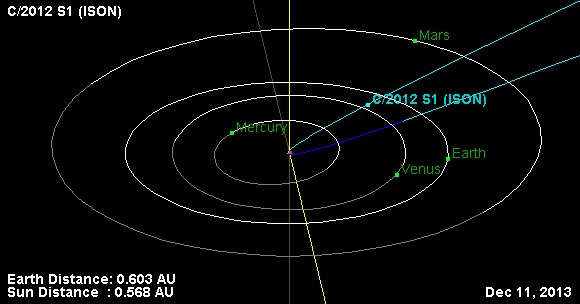 |
| The Hubble telescope caught this image of ISON a couple weeks ago |
Comets are icy balls of stuff surrounded by a 'coma' or a thin, fuzzy, temporary atmosphere. As they approach the sun (or any other star), the solar radiation and solar wind tend to blow away from the comet body. This is what produces the signature tail of a comet. When they are far away from sources of solar radiation and solar wind, they lose their dramatic tail.
Comet C/2012 S1, also known as comet ISON, was discovered last September. According to prediction it will zoom in toward the center of our solar system this fall, graze the Sun and then shoot back out into outer space. It should be bright enough to be seen by the naked eye from November of this year until January of next year.
 |
| image by NASA via Wikipedia |
Of course my concern is that this may be yet another situation where Mother Nature is trying to misdirect us. Remember last time when we were busy focusing all our telescopes on a meteor that was passing by on one side of the earth, we got whacked on the other side by one that actually did hit us. All I'm saying is keep your telescopes scanning the whole sky, ok guys?

No comments:
Post a Comment